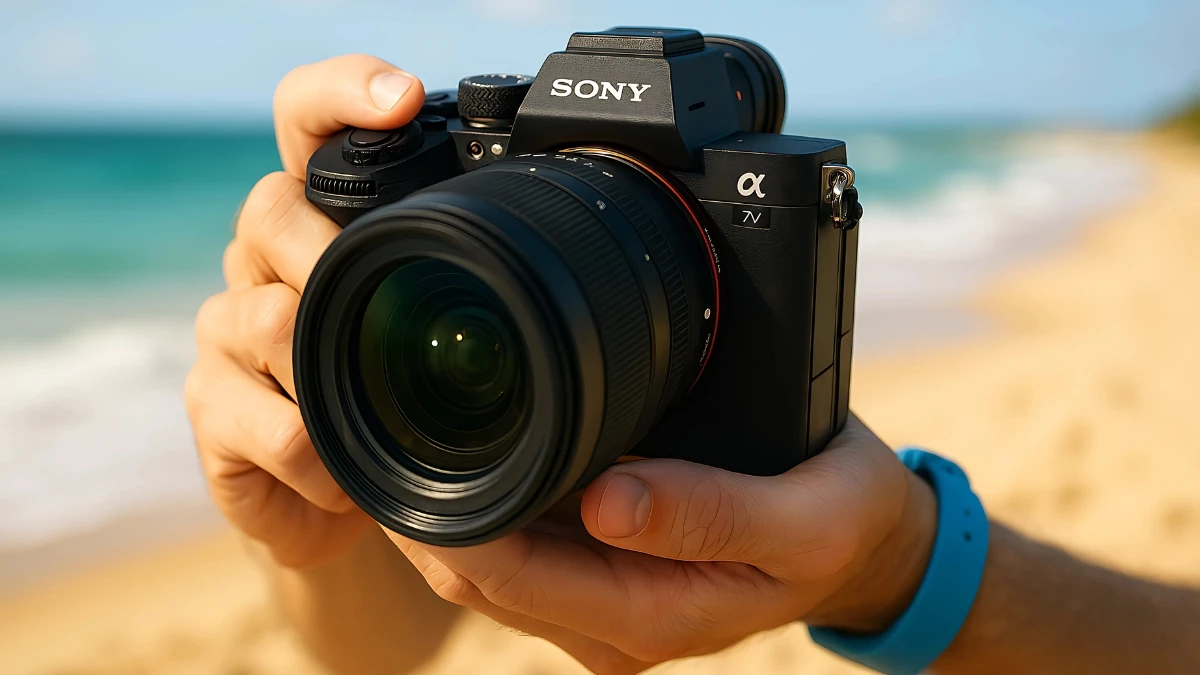Top 5 Best Cameras for Product Photography in 2025
In 2025, product photography continues to be an essential tool for businesses and e-commerce platforms looking to showcase their products in the best light. With advancements in camera technology, choosing the right camera is more important than ever for capturing sharp, high-quality images that make products stand out.
Whether you're a professional photographer or a small business owner, the right camera can make a significant difference in the quality of your product shots.
In this article, we will explore the top 5 best cameras for product photography in 2025, considering factors such as image quality, autofocus, resolution, and versatility.
| Rank | Camera |
|---|---|
| 5 | Sony α6700 |
| 4 | Nikon Z6 III |
| 3 | Fujifilm X-T5 |
| 2 | Canon EOS R6 Mark II |
| 1 | Sony α7 IV |
5. Sony α6700
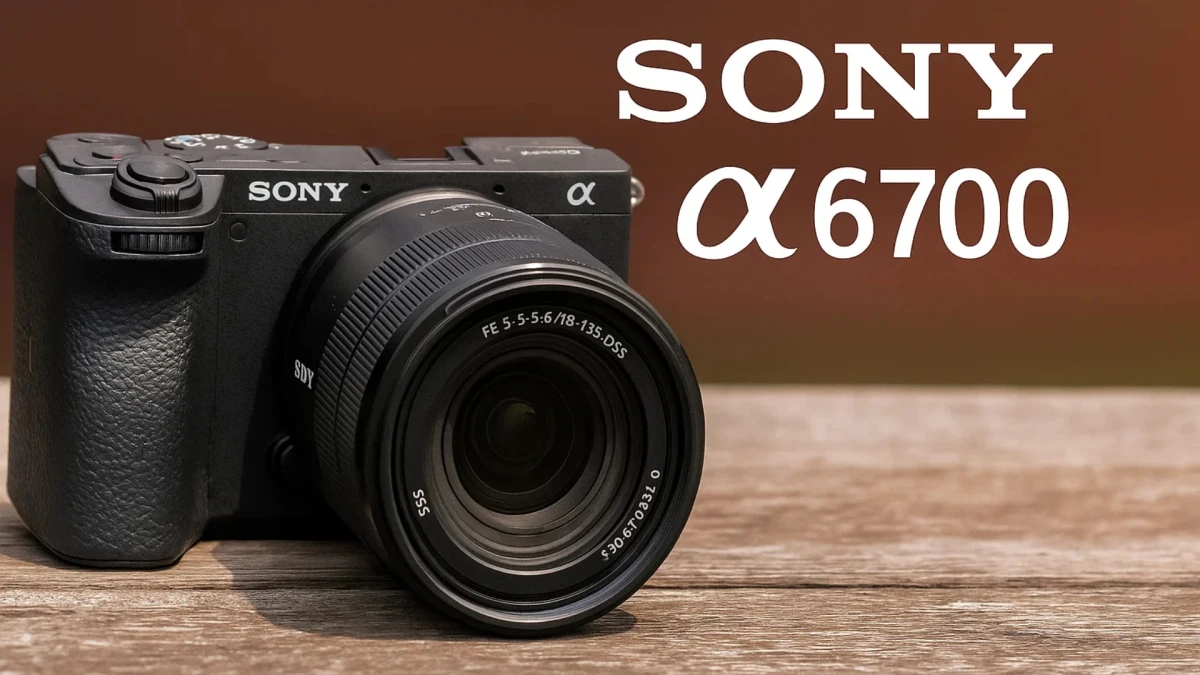
The Sony α6700 is the best all-around mid-range camera we've tested for photographers. This hybrid model uses a 26-megapixel APS-C sensor and captures fantastic overall image quality.
For businesses and content creators working with tighter budgets, the α6700 provides professional capabilities at an accessible price point.
Key Specifications:
- 26-megapixel APS-C sensor
- Compact and lightweight design
- Advanced autofocus system
- 4K video capabilities
- Access to Sony's extensive lens ecosystem
Why It Excels for Product Photography:
Despite its budget-friendly positioning, the α6700 delivers image quality that rivals much more expensive cameras. The 26-megapixel sensor provides sufficient resolution for most product photography applications, while the compact size makes it perfect for on-location shoots or cramped studio spaces.
The camera's access to Sony's mature E-mount lens ecosystem means you can choose from numerous high-quality macro and prime lenses, many available at competitive prices from third-party manufacturers.
This flexibility allows you to build a complete product photography system without breaking the budget.
The α6700's excellent autofocus performance and 4K video capabilities make it ideal for content creators who need both stills and video for social media marketing and e-commerce applications.
Best For: Small businesses, social media marketers, content creators, photographers starting their first professional setup
4. Nikon Z6 III
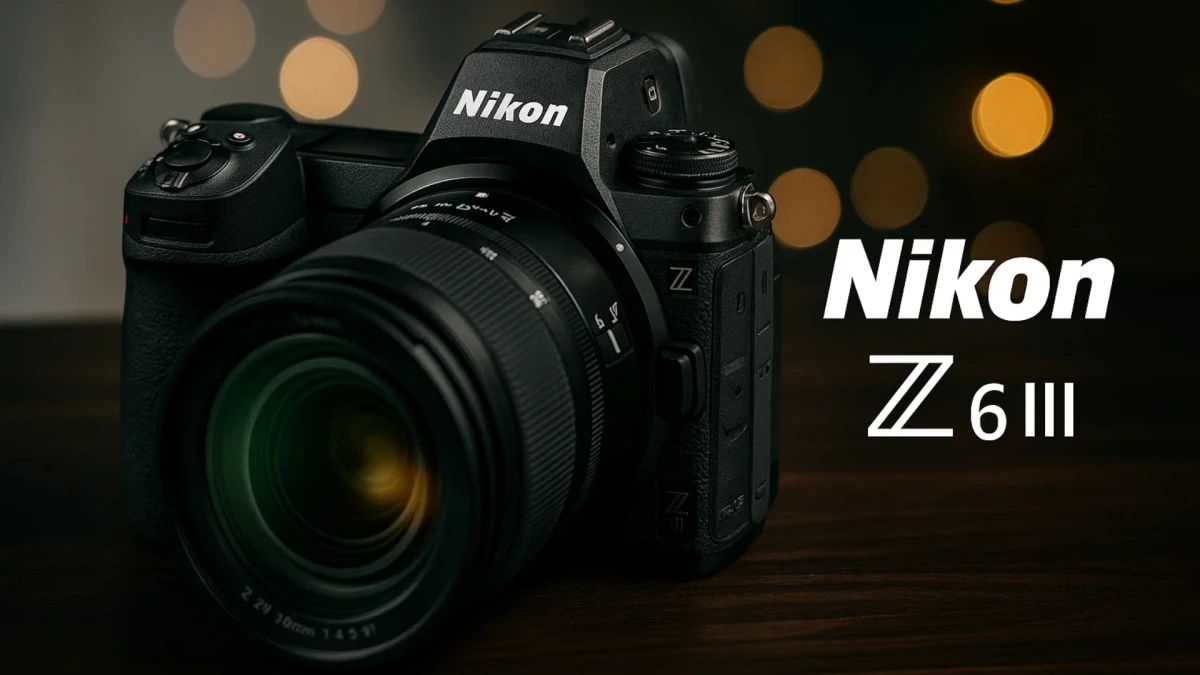
Experts have identified the Nikon Z6 III as a stand-out stills camera in 2025, impressed by its speed, performance and image quality. This full-frame mirrorless camera offers professional-level performance at a competitive price point.
Key Specifications:
- 24.5-megapixel full-frame sensor
- Advanced autofocus with subject detection
- Excellent build quality and weather sealing
- Growing Z-mount lens ecosystem
- Strong value proposition
Why It Excels for Product Photography:
The Z6 III delivers professional image quality with excellent dynamic range and color reproduction at a price point that makes it accessible to growing businesses. Reviewers have been impressed by its speed, performance and image quality, while also finding it an intuitive camera to handle, making it easy to use during extended product photography sessions.
Nikon's Z-mount system, while newer than Sony's E-mount, offers excellent native lenses including the NIKKOR Z MC 105mm f/2.8 VR S macro lens. The system also maintains compatibility with Nikon's extensive F-mount lens library through adapters, providing access to decades of optical excellence.
The camera's robust build quality and reliable performance make it suitable for professional use, while the competitive pricing provides excellent value for photographers transitioning from DSLR systems or building their first professional setup.
Best For: Growing businesses, photographers transitioning to mirrorless, studios seeking reliable performance at competitive pricing
3. Fujifilm X-T5
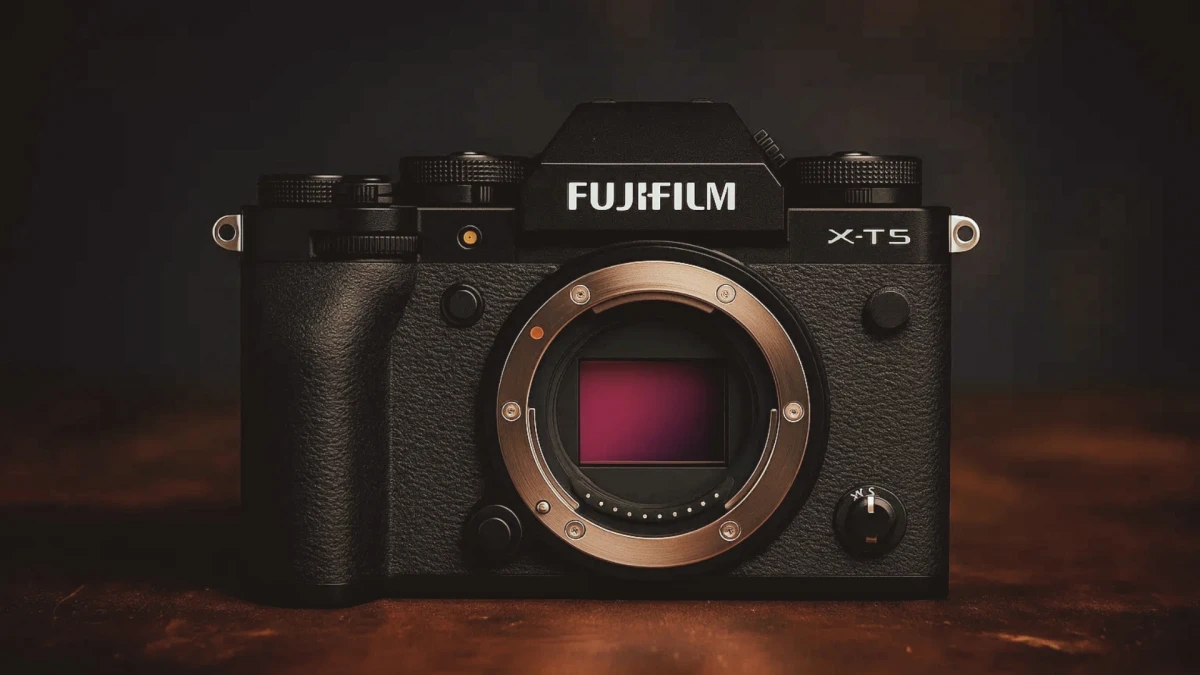
Few cameras match the Fujifilm X-T5 for enthusiast photographers at its price point. Resolution, all-round spec, and charming looks and handling make it hard to beat for the money. This APS-C mirrorless camera offers professional-level image quality in a more compact and affordable package.
Key Specifications:
- 40.2-megapixel APS-C sensor (highest resolution in its class)
- Classic camera design with dedicated exposure dials
- Three-way tilting LCD screen
- In-body image stabilization
- Film simulation modes for creative looks
Why It Excels for Product Photography:
The X-T5's 40.2-megapixel sensor delivers exceptional detail that rivals many full-frame cameras, while the APS-C format allows for smaller, lighter, and more affordable lenses. This combination makes it perfect for product photographers who need to travel or work in space-constrained environments.
Styled like a classic film camera, the X-T5 is aimed squarely at stills photographers, with dedicated physical controls that provide quick access to essential settings. The three-way tilting screen proves invaluable for low-angle product shots and overhead flat-lay photography.
Fujifilm's renowned film simulation modes offer creative options straight out of camera, allowing photographers to achieve specific looks and moods without extensive post-processing. The smaller APS-C sensor also provides greater depth of field at equivalent apertures, making it easier to keep entire products in sharp focus.
Best For: Small businesses, content creators, travel product photography, photographers seeking excellent value and portability
2. Canon EOS R6 Mark II
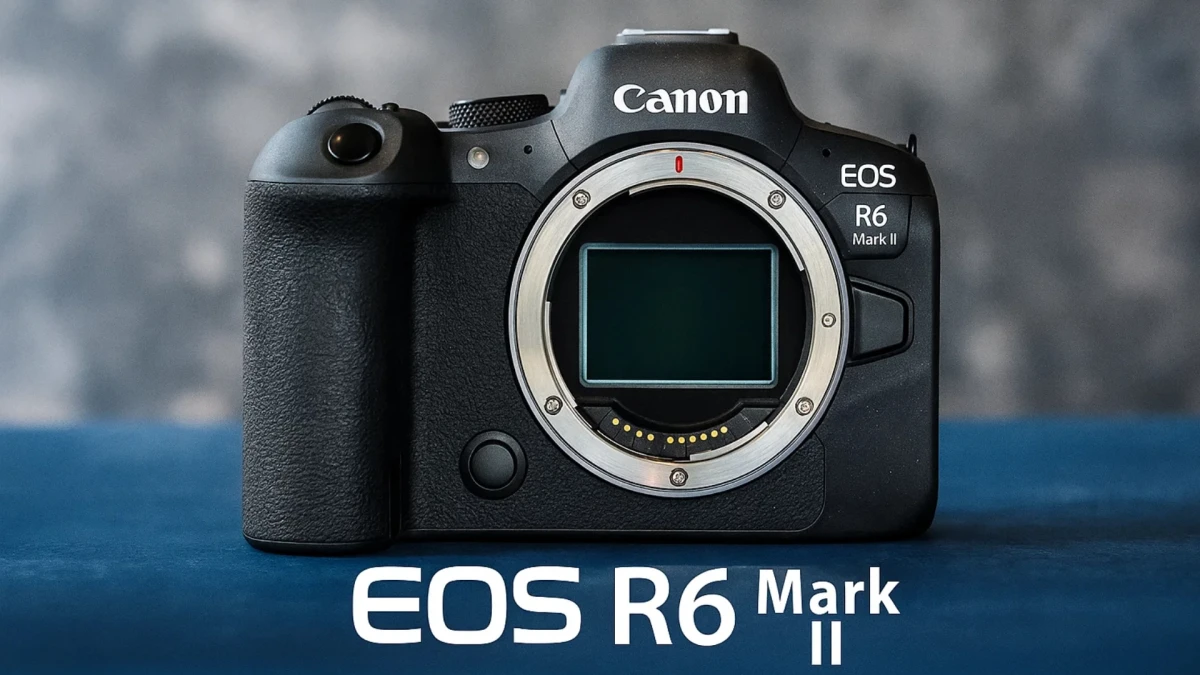
The Canon EOS R6 Mark II is a gift for shooting in low light conditions. It's well built with superb image stabilization and a host of other user-friendly features and it's capable of producing some truly stunning images.
This makes it an exceptional choice for product photographers working in challenging lighting conditions or those who frequently photograph reflective products like jewelry and glassware.
Key Specifications:
- 24.2-megapixel full-frame sensor optimized for low light
- Up to 8 stops of image stabilization (lens + body)
- Excellent color science and skin tone reproduction
- Fast and accurate Dual Pixel autofocus
- Robust weather sealing
Why It Excels for Product Photography:
The R6 Mark II's superior low-light performance allows for more flexibility in lighting setups, reducing the need for powerful studio strobes and enabling more natural-looking product shots. This proves particularly valuable when photographing beauty products, where subtle gradients and skin tones must be rendered accurately.
Canon's renowned color science ensures consistent, pleasing color reproduction straight out of camera, significantly reducing post-processing time. The camera's exceptional image stabilization system allows for sharp images even when working with longer focal length macro lenses handheld, providing creative freedom in tight studio spaces.
The intuitive control layout and menu system make it easy to adjust settings quickly during fast-paced product shoots, while the robust build quality ensures reliable performance in demanding studio environments.
Best For: Studio photographers, jewelry and luxury goods photography, beauty and skincare products, photographers prioritizing color accuracy.
1. Sony α7 IV
The Sony α7 IV is one of the best cameras for photography that experts have tested, and it stands as the top recommendation for product photography in 2025. This full-frame mirrorless camera combines cutting-edge technology with practical features that make it ideal for both studio and on-location product shoots.
Key Specifications:
- 33-megapixel full-frame sensor with exceptional dynamic range
- 5-axis in-body image stabilization
- Dual SD card slots with CFexpress Type A compatibility
- Weather-sealed construction
- Advanced autofocus with real-time tracking
Why It Excels for Product Photography:
The α7 IV's 33-megapixel sensor strikes the perfect balance between resolution and file size, providing enough detail for extensive cropping while maintaining manageable file sizes for efficient workflow. The real reason this camera tops the list—at this price point, any modern camera can capture amazing image quality—comes down to its wide selection of lenses.
Sony's E-mount system offers one of the most comprehensive lens ecosystems available, including exceptional macro options like the Sony FE 90mm f/2.8 Macro G OSS and third-party alternatives from Sigma and Tamron.
This versatility allows photographers to tackle any product photography challenge, from extreme close-ups of jewelry to larger lifestyle shots.
The camera's sophisticated autofocus system with real-time tracking proves invaluable when photographing products with reflective surfaces or when working with moving subjects like flowing fabrics or liquid splashes. The 5-axis image stabilization system enables sharp handheld shooting, providing creative freedom when traditional tripod setups prove limiting.
Best For: Professional studios, e-commerce businesses with diverse product ranges, photographers seeking maximum versatility
What Makes a Great Product Photography Camera?
Before diving into the top picks, it's essential to understand what separates a good product photography camera from a great one. Different products demand different approaches to capture their unique characteristics effectively, but certain fundamental features remain crucial across all product categories.
High Resolution forms the foundation of professional product photography. A camera with at least 24 megapixels provides the detail necessary for large format prints and allows for significant cropping without sacrificing image quality. This flexibility proves invaluable when photographers need to showcase specific product details or create multiple compositions from a single shot.
Exceptional Macro Capabilities become essential when photographing smaller items. The reproduction goal of the macro lens is the life-size reproduction of the object on the sensor, and true macro lenses offering 1:1 magnification ratios allow photographers to capture intricate details that would be invisible to standard lenses.
Superior Color Accuracy ensures products appear true-to-life across different devices and printing methods. Professional-grade cameras with reliable color reproduction minimize the need for extensive editing, allowing photographers to maintain consistency across product catalogs effortlessly.
Wide Dynamic Range helps capture both the brightest highlights and deepest shadows without losing detail. This proves particularly important when photographing reflective surfaces, metallic objects, or products with complex lighting requirements.
In-Body Image Stabilization reduces camera shake during handheld shooting, enabling sharp images even in challenging conditions or when working with slower shutter speeds for creative effects.
Essential Lenses for Product Photography
Professional photographers often cite the Canon 100mm F2.8L Macro Lens as a favorite for product photography, and similar focal lengths prove ideal across all camera systems.
The choice of lens often matters more than the camera body when it comes to product photography results.
Macro Lenses for Detail Work
Premium Options:
- Canon RF 100mm f/2.8L Macro IS USM ($1,400)
- Sony FE 90mm f/2.8 Macro G OSS ($1,100)
- Nikon NIKKOR Z MC 105mm f/2.8 VR S ($1,000)
Budget-Friendly Alternatives:
- Sigma 105mm f/2.8 DG DN Macro Art ($670)
- Tamron 90mm f/2.8 Di III Macro VXD ($700)
Versatile Zoom Lenses
Standard Zoom Options:
- 24-70mm f/2.8 lenses provide excellent versatility for studio work
- 24-105mm f/4 options offer extended reach with good sharpness throughout the range
Professional photographers recommend 24-105mm or 24-70mm lenses for their versatility and ideal focal length range for product photography applications.
Disclaimer:
The information provided in this article is based on current specifications, expert reviews, and the latest advancements in camera technology as of 2025. While every effort has been made to ensure the accuracy and relevance of the information, technological advancements and product releases may affect the performance or ranking of the cameras listed. Prices, availability, and features may vary by region and over time. It's important to consider your unique needs, budget, and shooting style when choosing a camera for product photography. Always verify specifications and test products firsthand before making a purchase.

